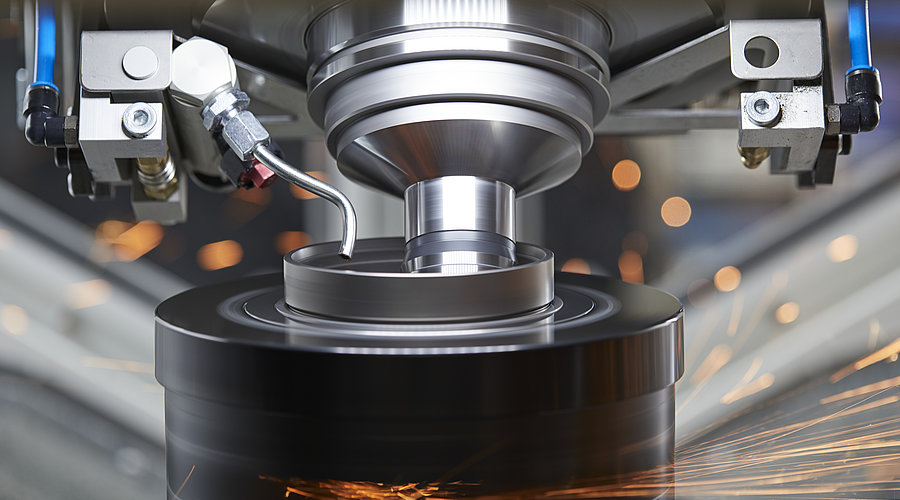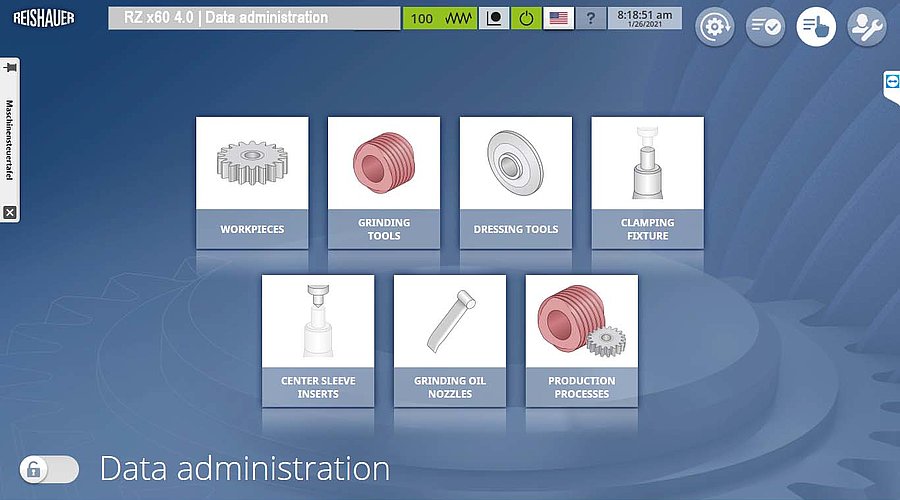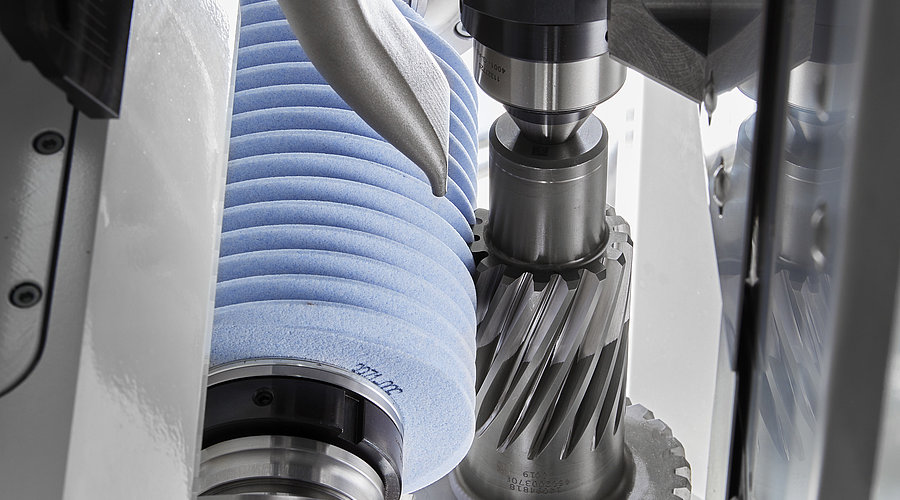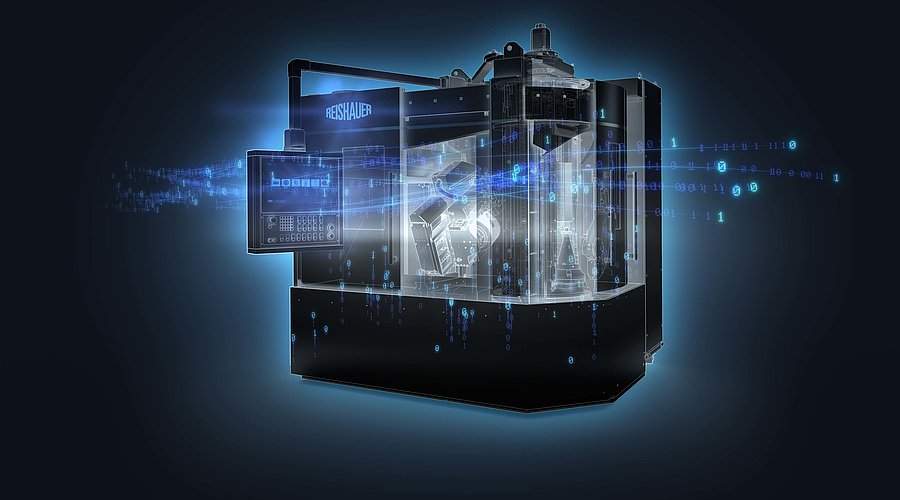Generating Skiving
Skiving has been known for over 100 years. The inventor, Julius Wilhelm von Pittler, applied for the patent in 1910! One of the reasons it lived in the shadows of other processes was that the machines were initially not up to the task and, for hard-finishing, the tooling offered insufficient tool life. Every automatic transmission features several planetary gear sets with internal gearing that could be hard-finished if an adequate process were available. For this reason, Reishauer designed a very stiff generating skiving machine and concurrently developed cutting tools that feature superhard material for their cutting edges. This combination enables the generating skiving process to be economical and successful for the hard-finishing of internal gear components.
Reishauer Software Platform (RSP) Touch Screen CNC Control Technology
The scarcity of skilled operators demanded a rethinking of the machine’s operating design. Hence, the key design criteria of the new RZControl was its user-friendliness. Easily understandable icons guide the user through the set-up process. These visual aids apply both to generating skiving and generating grinding. The Reishauer Software Platform RSP simplifies operation and process design considerably, reduces potential errors, and increases efficiency with modern database technologies encompassing tooling, workpieces, and processes. During data input, the control automatically generates machining proposals based on sophisticated calculation models. The RZDesk option enables making grinding programs on the PC, which can be transferred to the machine even during a running operation. While setting up the grinding process, the grinding time and number of parts per grinding wheel width are calculated, including for low-noise and optimized shifting.Operating equipment needs to be recorded only once and is available on a database, both on the machine control and the RZ-Desk option.
Generation Grinding Machine Series Rzx60 4.0
Over 1000 RZx60 machines in the market have proven themselves as a successful concept. Building on this experience, the machine concept has been revised and adapted to the requirements of Industry 4.0 applications. The 4.0 series still features all the proven technologies including the double spindle feature. However, this has been complemented with the latest control technology and modern interfaces for Industry 4.0 applications. This article discusses two of these features: The RSP CNC Control and the ARGUS process monitoring system. The RZ160 KWS allows the grinding of gears with interference contours, as shown in Illustration 3:
Making Gear Grinding Transparent with Reishauer’s ARGUS Monitoring System
The ARGUS process monitoring system controls the dressing and grinding intensities by applying real-time data processing and tested algorithms. “Grinding and dressing intensities” are process-based force models to calibrate the grinding and dressing forces to interpret and control the process. The force models encompass the characteristics of the cutting zone, the cutting kinematics over the changing grinding wheel diameter, the variation of the wheel’s RPM, and the variable lever ratios depending on the wheel‘s position to the axial location of the bearing. The force calibration allows the setting of narrow limits for evaluating the process, which, in turn, offers the user a high-resolution error evaluation. For example, based on this evaluation and the set boundaries, workpieces of faulty prework are automatically removed.
Furthermore, the ARGUS system demonstrates a direct correlation between grinding intensities and measurement data from the CMM. The gear grinding machine can produce far more parts per unit of time than a CMM machine can measure. Hence, to date, users must rely on sample measurements. However, once a few samples are approved, the ARGUS monitoring system is suitable for 100% in-process measurement, leading to a zero-error production.
As the system offers traceability of each ground workpiece and off-machine data storage options, this allows new insights into the machine capability and KPIs of the processes. For grinding and dressing, this system uses adaptive strategies, allows better usage of potential process parameters, and improves tool life, all of which carry significant economic benefits.
Walter Graf, Reishauer AG, Switzerland








